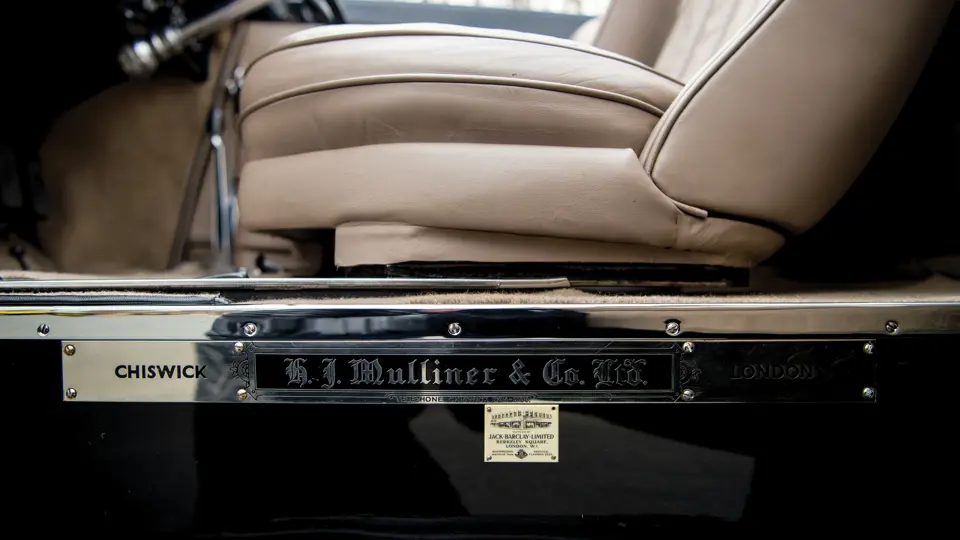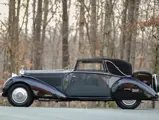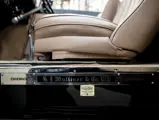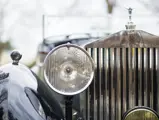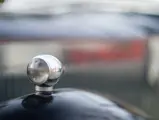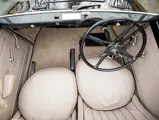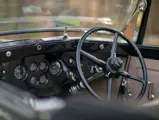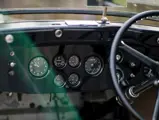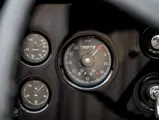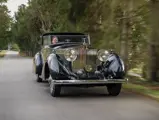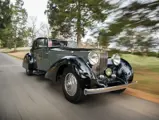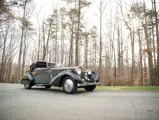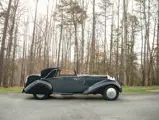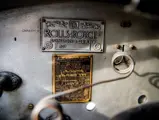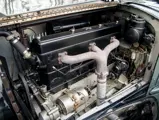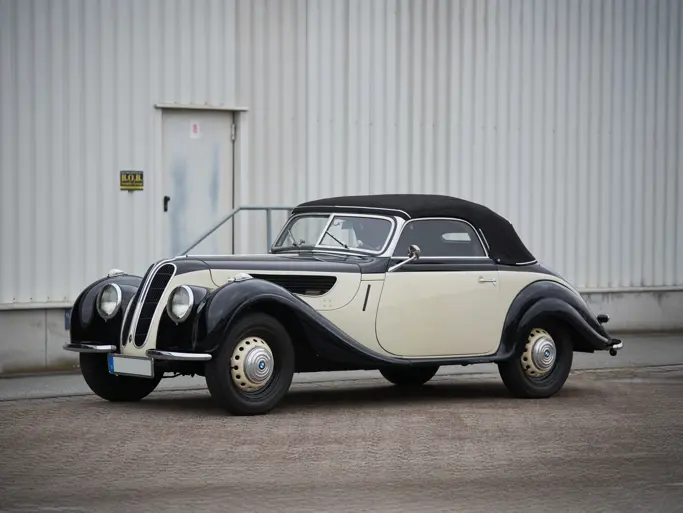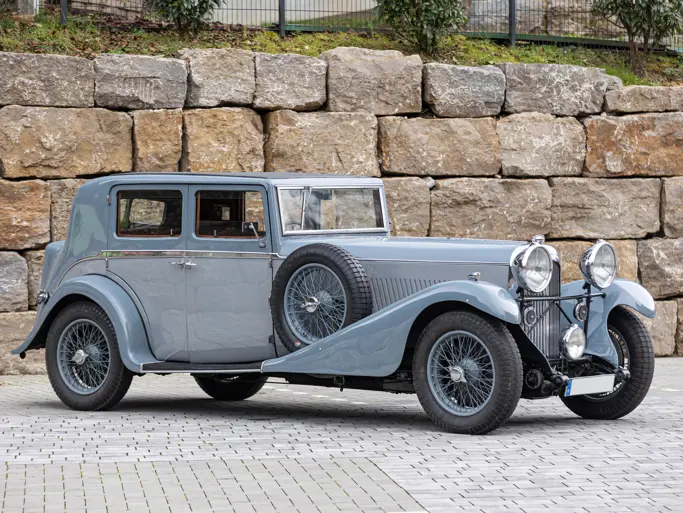
1934 Rolls-Royce Phantom II Continental Sedanca Drophead Coupe by H.J. Mulliner
{{lr.item.text}}
$550,000 USD | Sold
{{bidding.lot.reserveStatusFormatted}}
- Formerly of the Bob Barrymore Collection
- Rare and stunning sporting bodywork with period coachbuilt updates
- Known and prestigious ownership history; featured in many books
- Documented by Rolls-Royce Foundation and RREC Hunt House build records
- A superb Phantom II Continental in every important regard
Body Style 4161. 120 bhp, 7,688 cu. in. OHV inline six-cylinder engine with single-jet semi-expanding carburetor, four-speed manual transmission, front and rear semi-elliptic leaf-spring suspension, and four-wheel servo-assisted drum brakes. Wheelbase: 144 in.
One of the final Phantom II Continental chassis produced, chassis number 120SK was reportedly one of only three bodied by H.J. Mulliner as a sedanca drophead coupe, using a design originally created by London dealer H.R. Owen for Gurney Nutting. This elegant, three-position body featured superb close-coupled design, with the body mounted well ahead of the rear axle, improving rear-seat comfort while creating space for the style’s characteristic rear-mounted trunk, providing abundant space for extended European vacations—for which the Continental had been designed. When the usually side-mounted spare was also relocated to the rear, as on this example, it freed the front fenders to be smooth, flowing, and gorgeous, accentuating the length of the car. Surviving photographs of this car when new confirm that it was originally delivered in this form.
The car was commissioned by London dealer Jack Barclay, whose badging still appears on its sills, and was used as Barclay’s demonstrator for several months. It was then delivered to its original owner, Sir Charles John Wilson, the 3rd Baron Nunburnholme, a British peer and frequent Barclay customer in good standing. Particular about his wants, as the landed gentry frequently are, he requested that the headlamp brackets be shortened, bringing them ¼-inch below the “shoulder” of the radiator, and that the floorboards of the car be unpainted! The car was also fitted with very comfortable and sporting adjustable front bucket seats, which remain today.
According to a former owner, Parisian Rolls-Royce agent Franco-Britannic placed an order for the car in 1938 to local coachbuilder Henri Chapron, to update its styling with the lovely “pontoon”-style fenders fitted today, although it has also been suggested that Henri Binder could have carried out the work. The fenders are certainly French in their style and are certainly a coachbuilt addition “of the period,” having been on the car by the early 1950s, when it was owned by P.M. Gardner of Negeve, France. In addition, they flawlessly blend into the car’s lines, fully updating and modernizing its appearance.
The car was subsequently sold into the United States, where, from 1957 until 1980, it was enjoyed by Frank Allen of Chestnut Hill, Massachusetts. It was then acquired by its next long-term caretaker, beloved American RROC member, enthusiastic tourer, and friend to many, the late Bob Barrymore of La Jolla, California. The Phantom II Continental was still owned by Mr. Barrymore at the time of his untimely passing 10 years afterward, and it remained well cared for by his family until 2002.
Subsequent to its sale from the Barrymore Estate, chassis number 120SK was cosmetically refinished, with new Masons Black and pewter grey paintwork in an exceptionally attractive color scheme, new leather upholstery, and a new canvas top and headliner, as well as refinished interior woodwork. Seldom driven since that work was completed, it has been mechanically and cosmetically freshened prior to sale. Its interior exhibits only the lightest of wear and stretching; similarly, the body finish is still in very good condition, with only minor chips around shut lines, and the fit throughout is very nice as well.
The car is well known and featured in several prominent books, including Raymond Gentile’s The Rolls-Royce Phantom II Continental (p. 235), Andre Blaize’s The Rolls-Royce Phantom II Continental (p. 978–979), and Lawrence Dalton’s Those Elegant Rolls-Royce (p. 149). Further, it is accompanied by copies of the original build records and information on further ownership history, from the files of the Rolls-Royce Enthusiasts’ Club (Hunt House) and Rolls-Royce Foundation.
Phantom II Continentals in any guise are rare and desirable. To find one so beautifully intact is even more special; this example boasts excellent, long-term known history, with only a handful of caretakers in the last half-century, and retains its original engine, chassis, and body, with attractive period updates. Known, respected, and indisputably among the most attractive of its kind, it is an automobile guaranteed to turn heads on the Continent or when displayed on a show field, in the hands of a modern-day aristocrat.





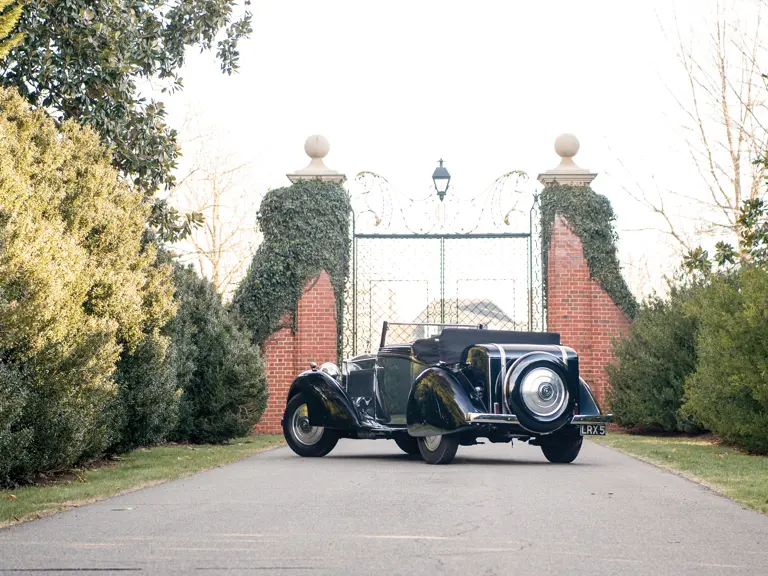
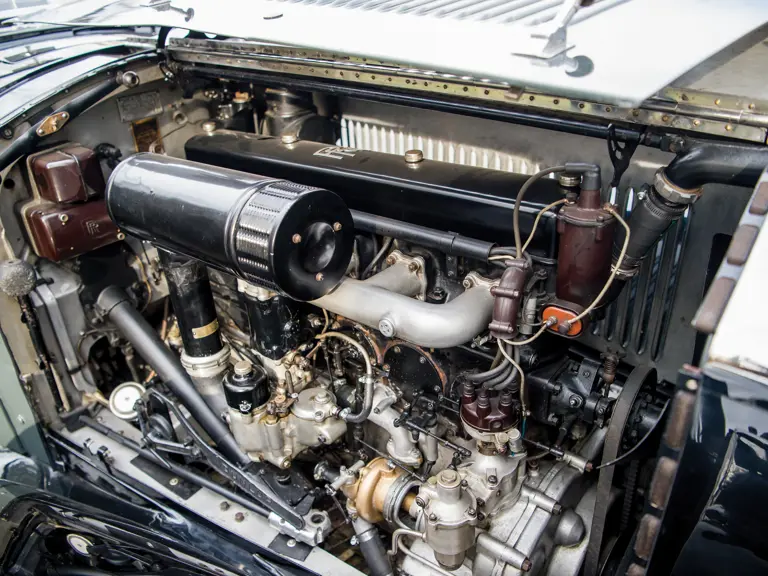
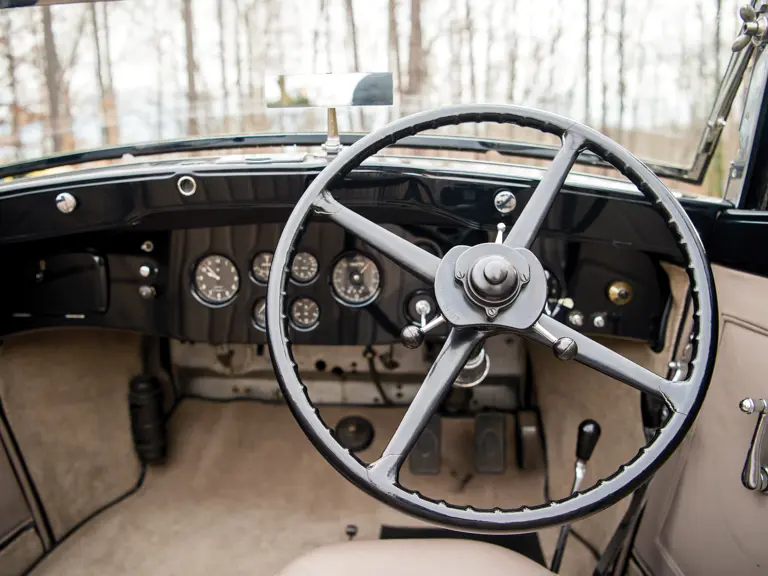
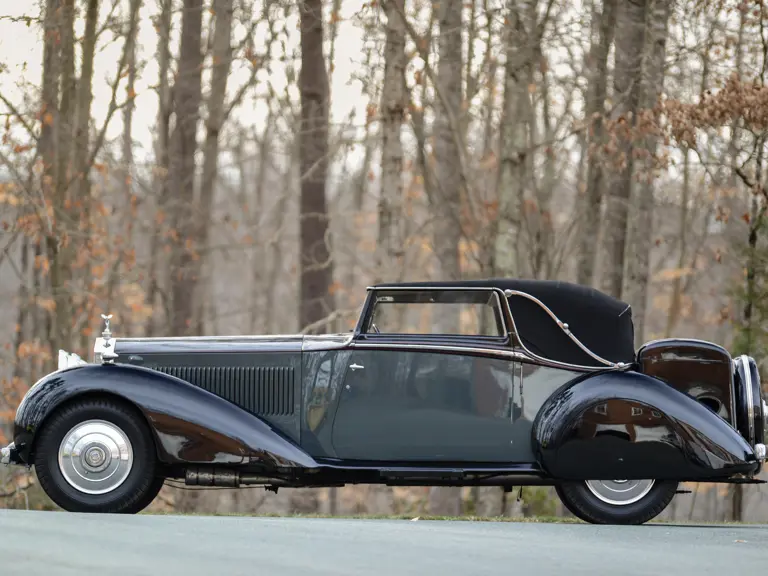
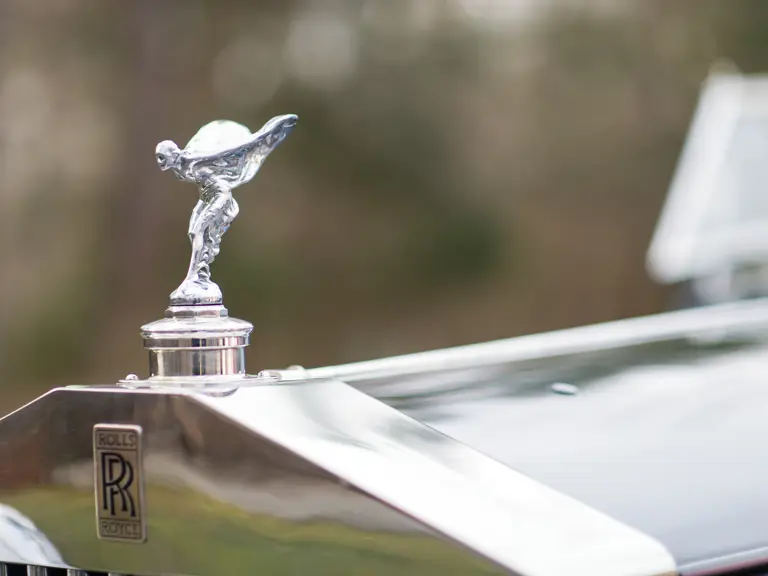
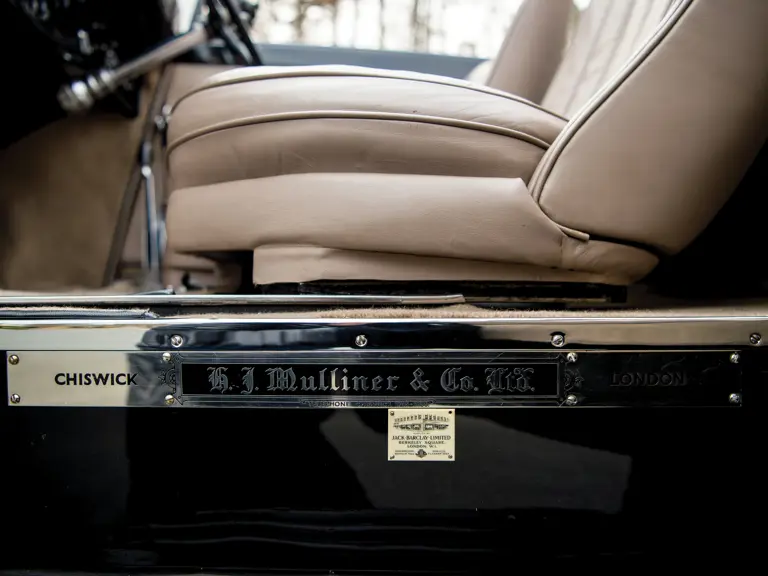
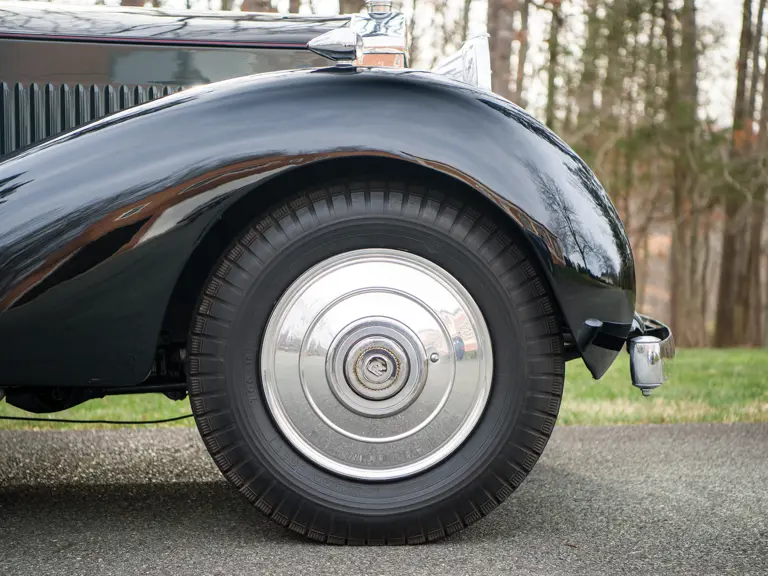
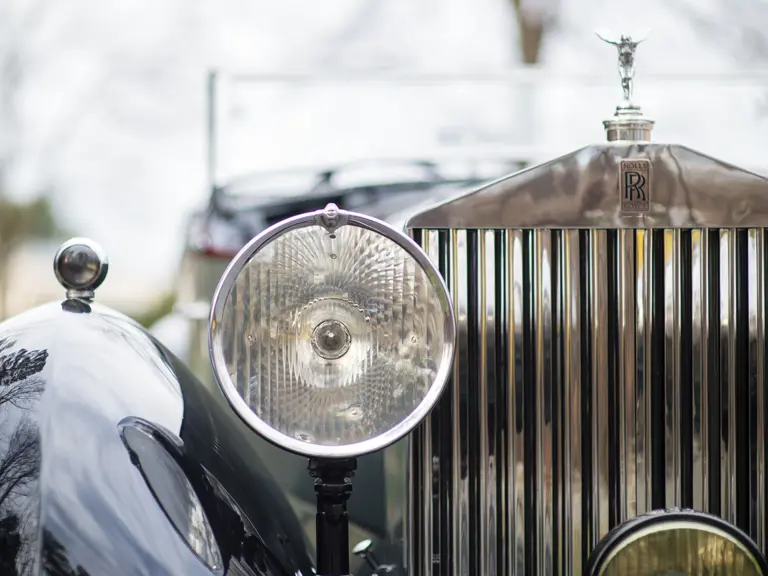
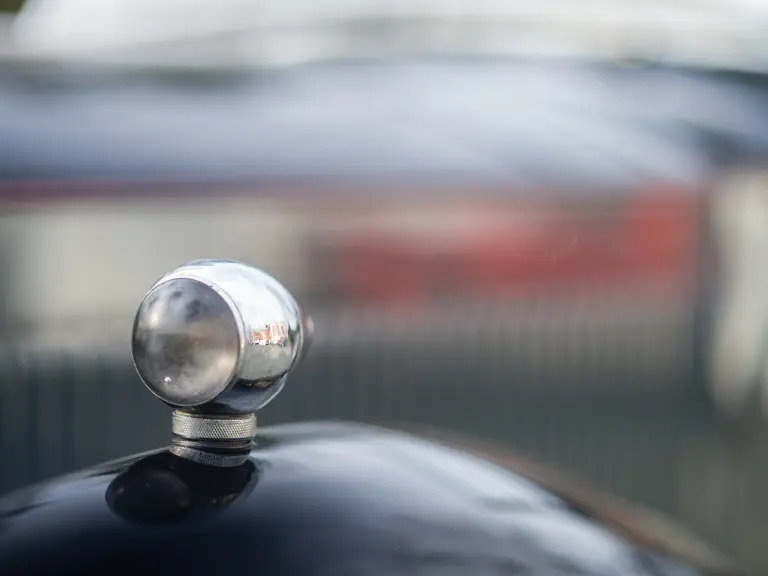
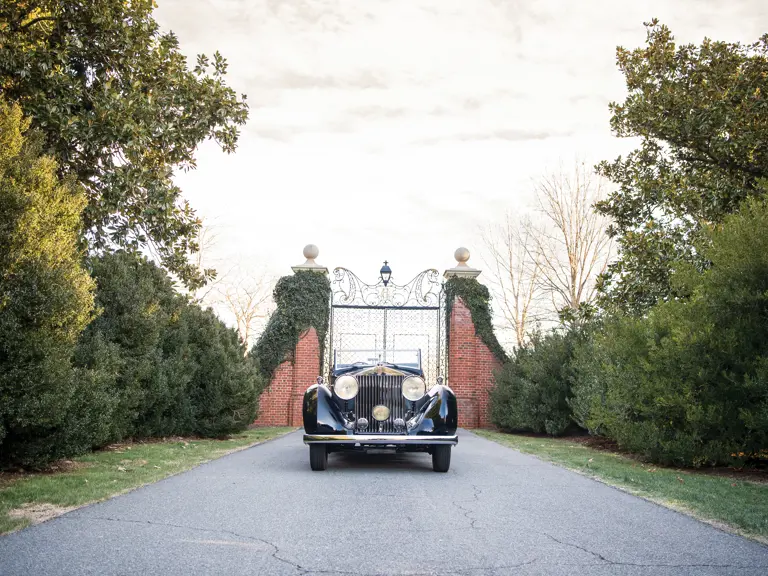
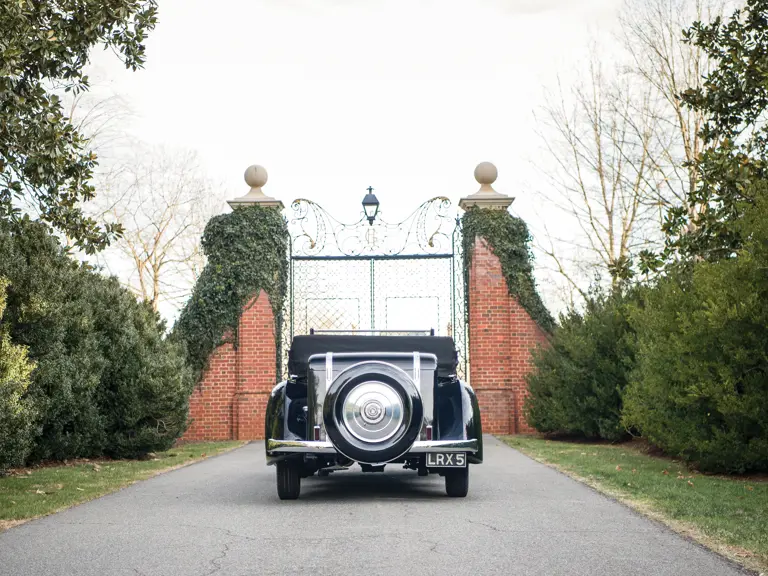
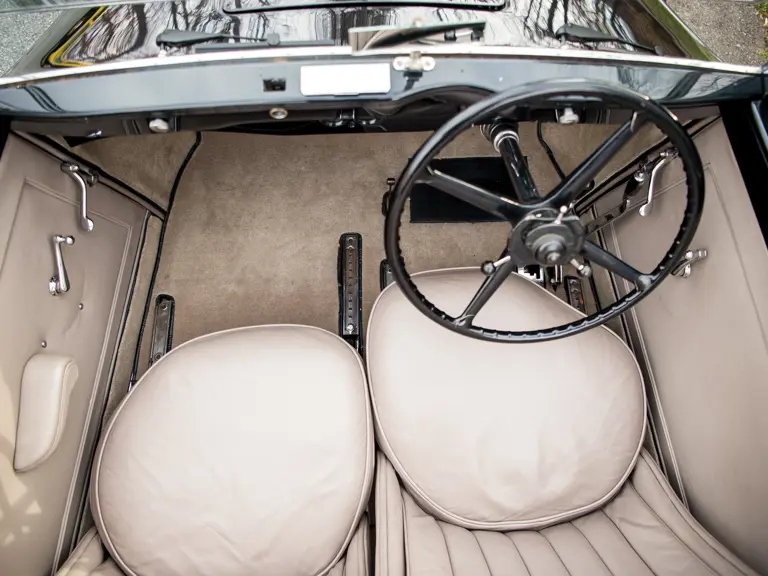

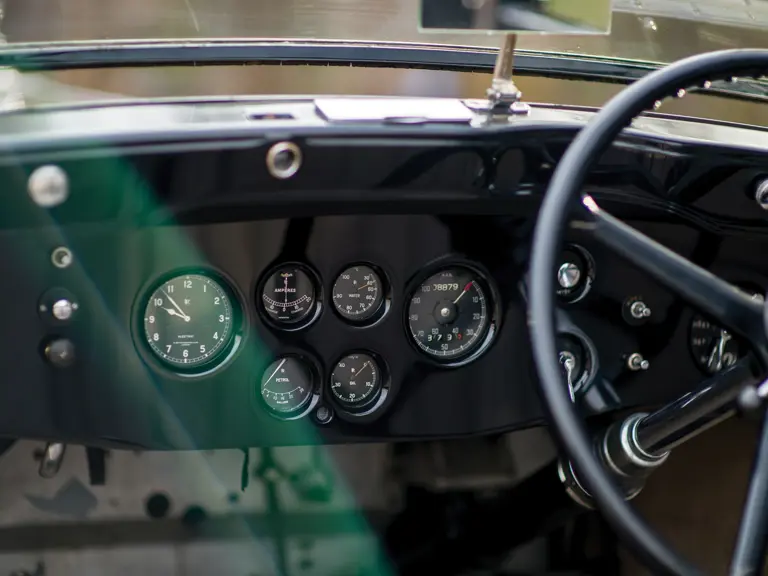

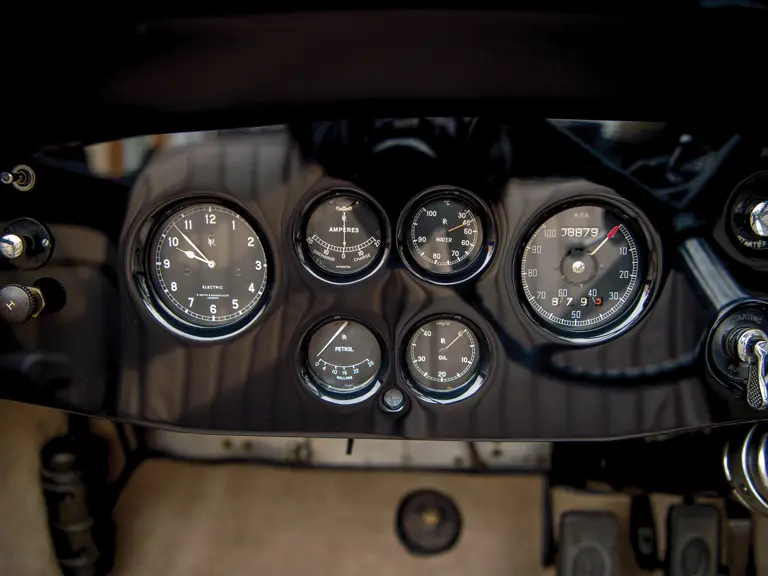

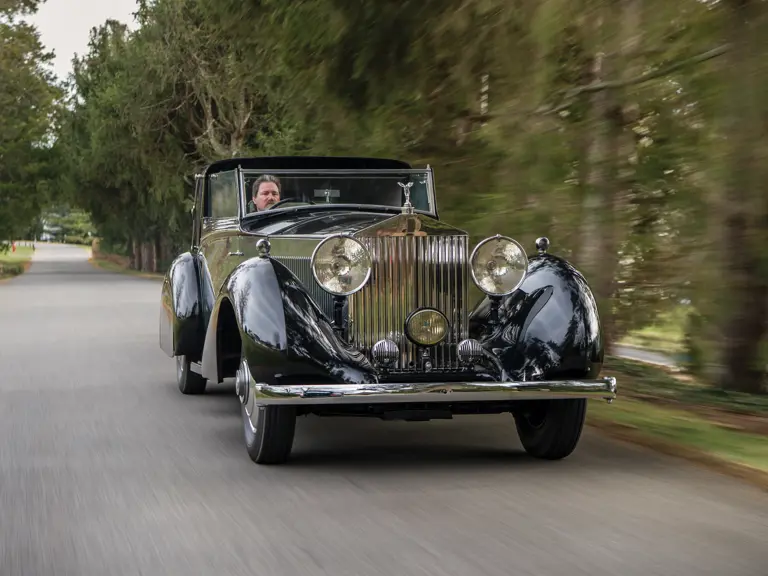
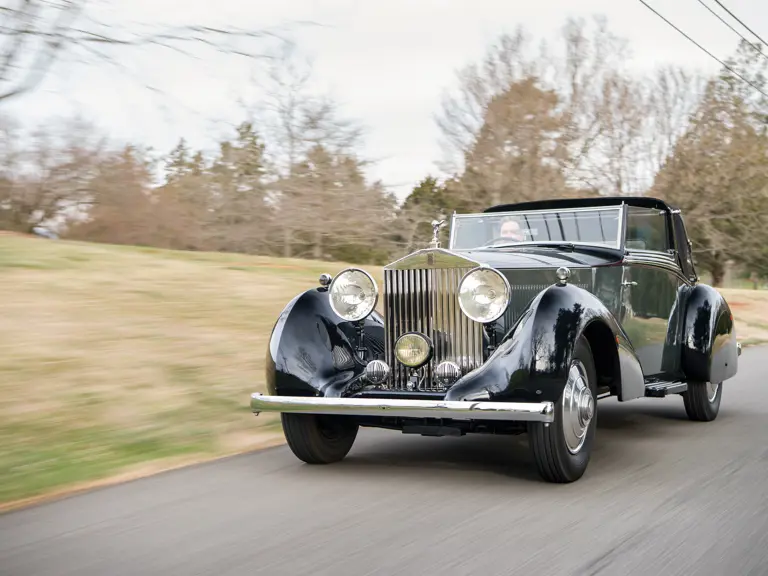
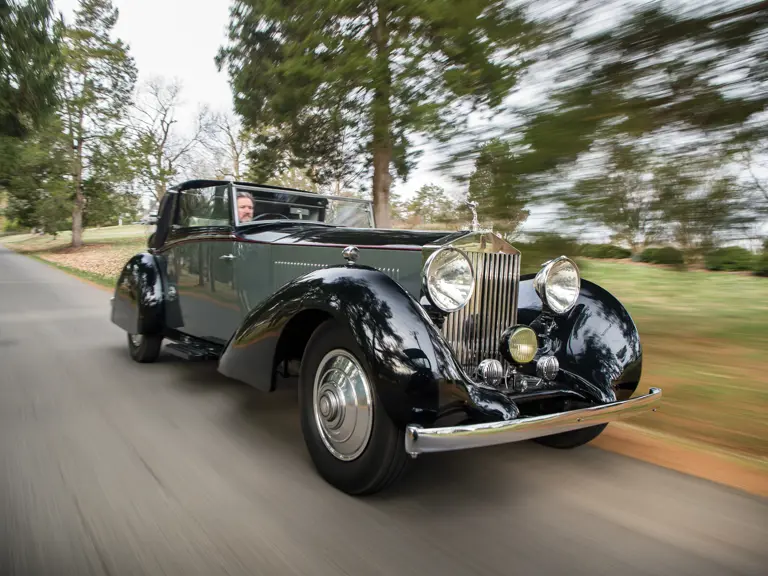
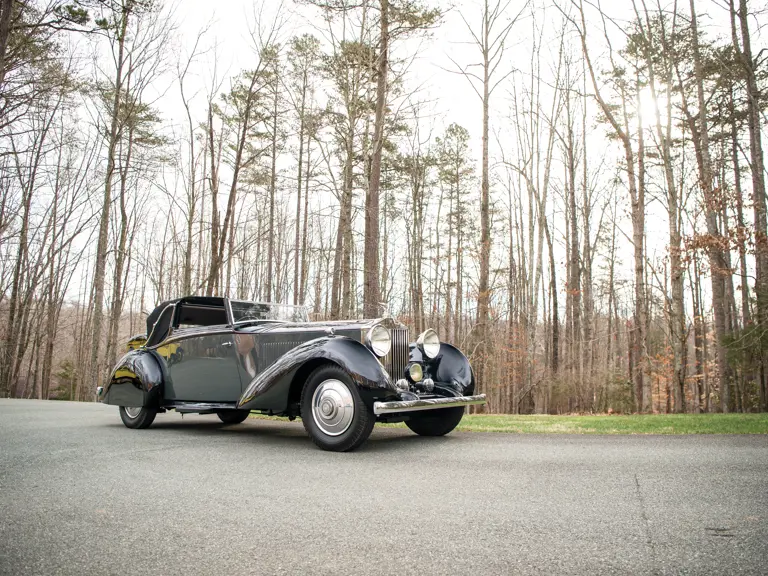
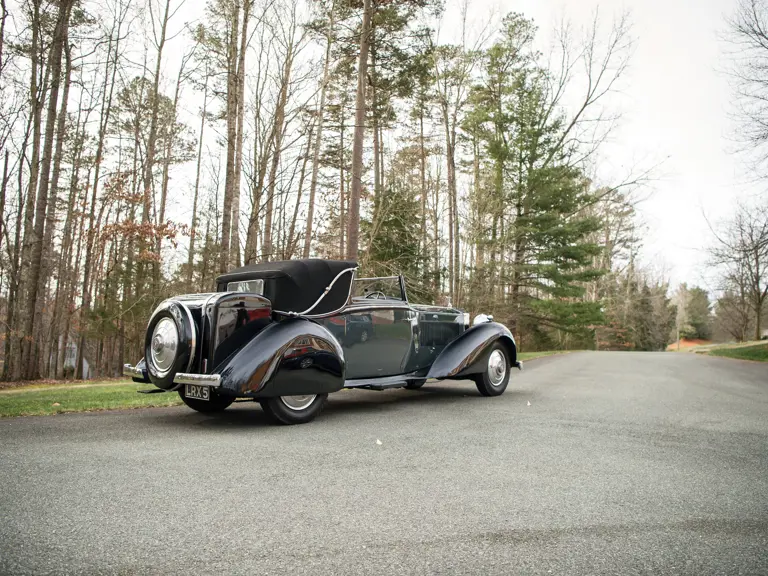
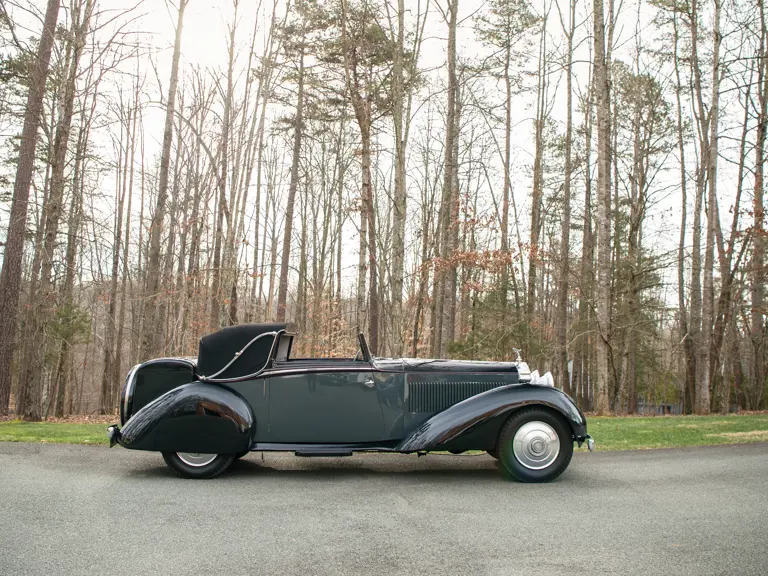

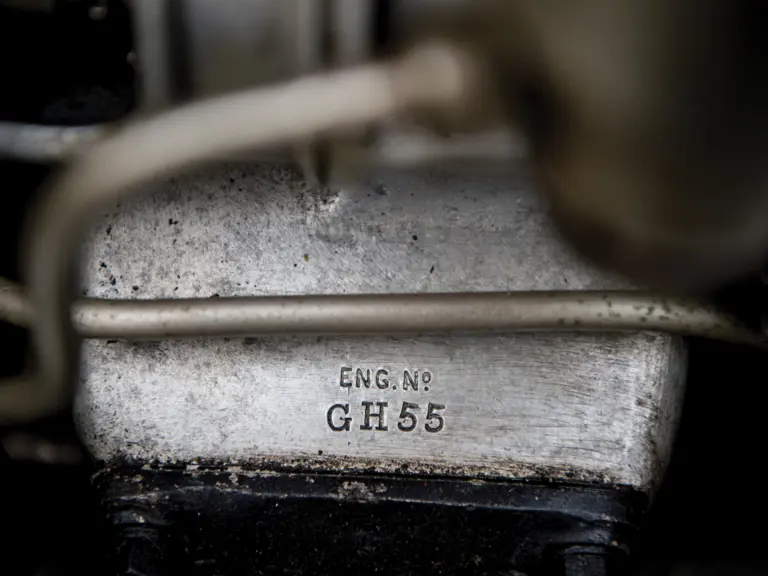
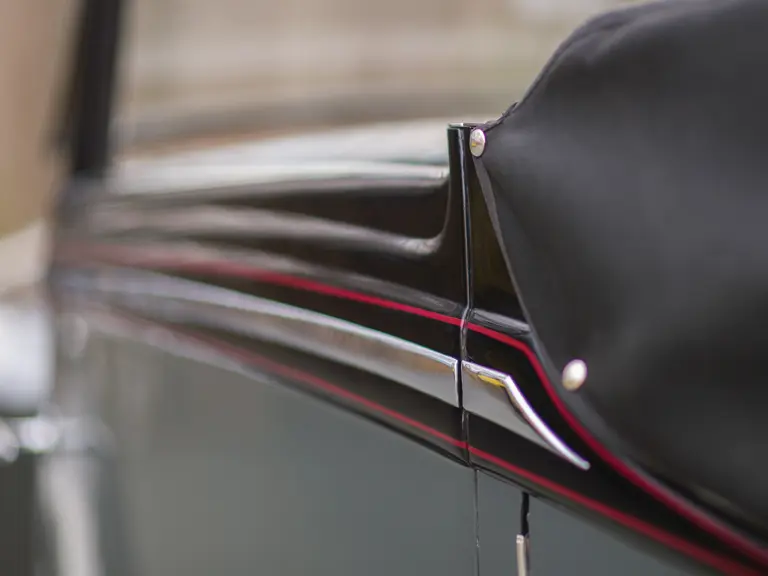
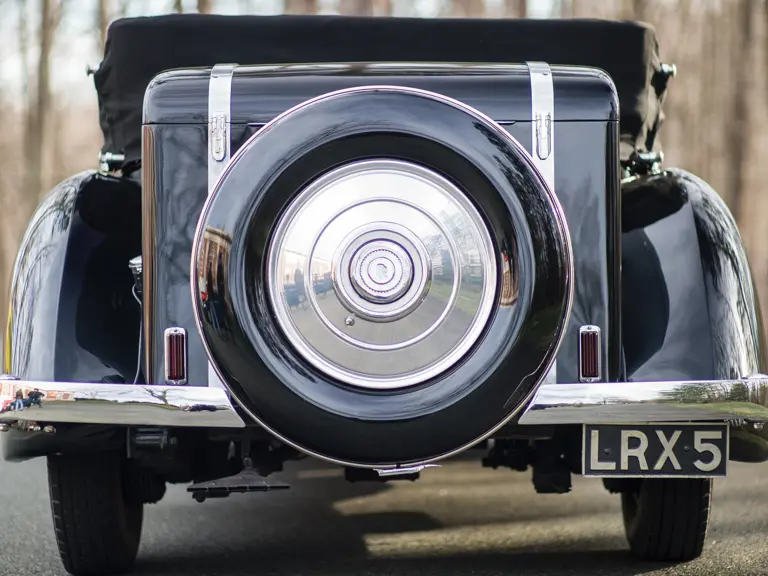
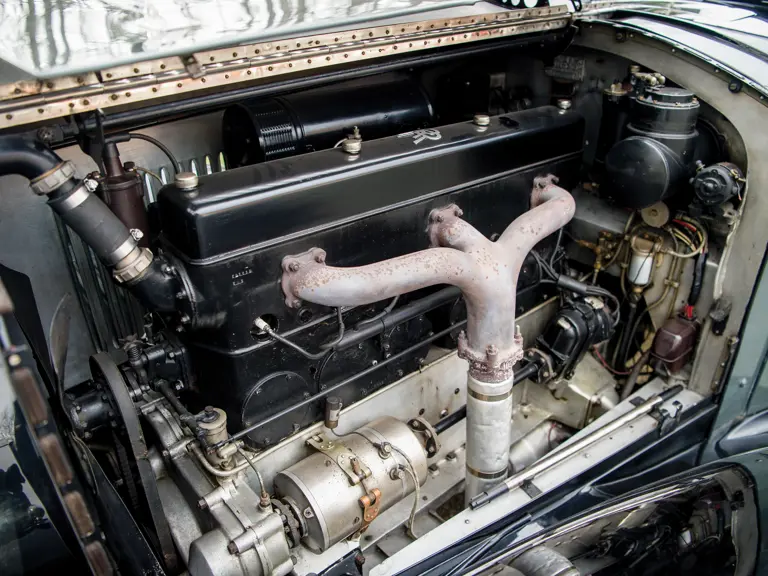
 | Amelia Island, Florida
| Amelia Island, Florida


